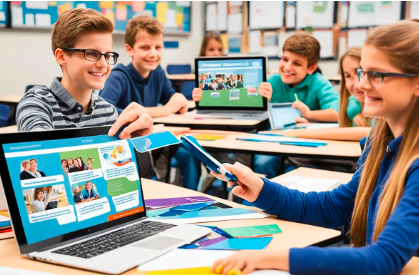As education continues to evolve, many schools are finding creative ways to bring technology into traditional classroom settings. This thoughtful blend of established teaching methods and modern digital tools is shaping what many call “blended learning.” By combining the best of both worlds, educators can enhance learning experiences, improve student engagement, and support a wider range of learning needs.
Why EdTech Belongs in the Traditional Classroom
Traditional classrooms provide structure, personal interaction, and a strong sense of community. EdTech tools, meanwhile, offer flexibility, access to up-to-date resources, and the ability to personalize instruction. When used together, they can create a more dynamic and responsive environment. For example, digital whiteboards, learning management systems, and interactive quizzes can make even routine lessons more engaging and memorable.
Tools That Complement Classroom Instruction
Simple tools like digital flashcards, multimedia presentations, and classroom apps are already making a big impact. Platforms such as Google Classroom, Nearpod, and Kahoot! allow teachers to organize lessons, deliver interactive content, and assess learning in real-time. These tools don’t replace traditional teaching—they enhance it by making lessons more accessible and interactive.
Supporting Different Learning Styles
One major benefit of EdTech in the classroom is its ability to support various learning styles. Visual learners might engage more deeply with video content or interactive diagrams. Auditory learners can benefit from podcasts or recorded lessons. Kinesthetic learners may thrive using touchscreens or completing digital simulations. With these tools in place, every student can find a way to connect with the content.
Keeping Teachers in Control
Technology in the classroom works best when teachers stay at the center of instruction. Rather than letting screens replace educators, effective EdTech use supports their role. Teachers can decide when to use tools, how to interpret the data gathered from digital platforms, and how to respond to student progress. It’s all about using tech as a tool—not a substitute.
Making the Transition Smooth
Introducing EdTech to a traditional classroom doesn’t require a total overhaul. Small steps, such as using a digital quiz at the end of a lesson or incorporating short educational videos, can make a noticeable difference. Schools can also provide professional development to help teachers feel more confident using new tools, ensuring a smoother and more successful integration.
Looking Ahead
As more classrooms embrace blended learning, it’s clear that thoughtful EdTech integration can enhance—not replace—the traditional school experience. With the right approach, schools can create an environment where students thrive academically while still enjoying the human connection and routine that a classroom brings.














